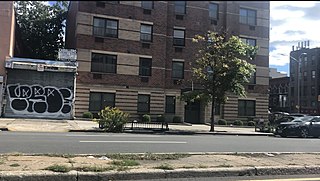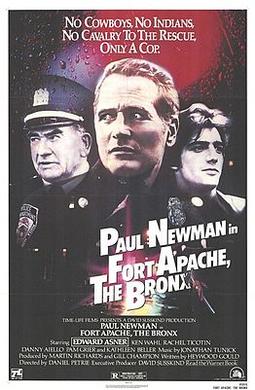
Francesco Vincent Serpico is an American retired New York Police Department detective, best known for whistleblowing on police corruption. In the late 1960s and early 1970s, he was a plainclothes police officer working in Brooklyn, the Bronx and Manhattan to expose vice racketeering. In 1967, he reported credible evidence of widespread police corruption, to no effect. In 1970, he contributed to a front-page story in The New York Times on widespread corruption in the NYPD, which drew national attention to the problem. Mayor John V. Lindsay appointed a five-member panel to investigate accusations of police corruption, which became the Knapp Commission.

Crime rates in New York City have been recorded since at least the 1800s. They have spiked ever since the post-war period. The highest crime totals were recorded in the late 1980s and early 1990s as the crack epidemic surged, and then declined continuously since the mid-1990s and throughout the 2000s.
John Francis Timoney was an American policeman and law enforcement executive. He served as Chief of the Miami Police Department from 2003 to 2010. He was previously Commissioner of the Philadelphia Police Department (1998–2002) and held a variety of positions with the New York Police Department (1967–96), including its Chief of Department and First Deputy Commissioner. He worked for the Ministry of the Interior of Bahrain as a police consultant. Timoney drew both international praise and criticism for his handling of mass protests.

The Super Cops is a 1974 action adventure film directed by Gordon Parks and starring Ron Leibman and David Selby. The film is based on the book The Super Cops: The True Story of the Cops Called Batman and Robin by L. H. Whittemore. The film was released a few months after the successful cop movie Serpico.
Marlon Legere, a Trinidadian-American from New York, is the convicted murderer of NYPD detectives Robert Parker and Patrick Rafferty.

Fort Apache, The Bronx is a 1981 American crime drama film directed by Daniel Petrie. The film is about a hard-drinking, lonely veteran cop, Murphy, and his young partner Corelli, who work in a crime-ridden precinct in the Bronx. Although Murphy's life takes a good turn when he falls in love with Isabella, a young nurse, the arrival of a new, law-and-order-minded police captain commanding the precinct, Connoly threatens to tip the neighborhood's delicate balance into anarchy. Danny Aiello, Kathleen Beller, and Pam Grier play supporting roles. It was written by Heywood Gould and produced by Martin Richards and Thomas Fiorello, with David Susskind as executive producer.
Benjamin Ward was the first African American New York City Police Commissioner.
A contagious shooting is a sociological phenomenon observed in military and police personnel, in which one person firing on a target can induce others to begin shooting. Often the subsequent shooters will not know why they are firing, unless they are infantrymen, in which case they are expected to do so. For instance, if someone was a member of a fire team following the point man and he suddenly begins firing his weapon, there is a good chance that their element is in contact with the enemy.

Russel Timoshenko was a 23-year-old New York Police Department (NYPD) police officer who was shot on July 9, 2007, and died five days later, after pulling over a stolen BMW automobile in New York City's Crown Heights, Brooklyn, neighborhood. After a four-day manhunt that stretched across three states, all three suspects Dexter Bostic, Robert Ellis and Lee Woods were eventually apprehended and convicted—two of murder, and the third for weapons possession. At his widely attended funeral, Timoshenko was posthumously promoted to the rank of Detective. The case garnered national media attention because the weapons used were all illegally obtained handguns. This sparked widespread debate over gun control laws in New York City, and over the process by which firearms are traced by police departments.

The Harlem riot of 1964 occurred between July 16 and 22, 1964. It began after James Powell, a 15-year-old African American, was shot and killed by police Lieutenant Thomas Gilligan in front of Powell's friends and about a dozen other witnesses. Hundreds of students from Powell's school protested the killing. The shooting set off six consecutive nights of rioting that affected the New York City neighborhoods of Harlem and Bedford-Stuyvesant. By some accounts, 4,000 people participated in the riots. People attacked the New York City Police Department (NYPD), destroyed property, and looted stores. Several protesters were severely beaten by NYPD officers. The riots and unrest left one dead, 118 injured, and 465 arrested.

The New York City Police Department (NYPD) is structured into numerous bureaus and units. As a whole, the NYPD is headed by the Police Commissioner, a civilian administrator appointed by the Mayor, with the senior sworn uniformed officer of the service titled "Chief of Department". The Police Commissioner appoints the First Deputy Commissioner as the department's second-in-command and the Chief of Department as the department's highest ranking uniformed officer. The commissioner also appoints a number of deputy and assistant commissioners who do not have operational command and are solely for support and administrative function. The department is divided into twenty bureaus, six of which are enforcement bureaus. Each enforcement bureau is further subdivided into sections, divisions, and units, and into patrol boroughs, precincts, and detective squads. Each bureau is commanded by a bureau chief. There are also a number of specialized units that are not part of any of the bureaus and report to the Chief of the Department.

Throughout the history of the New York City Police Department, numerous instances of corruption, misconduct, and other allegations of such, have occurred. Over 12,000 cases have resulted in lawsuit settlements totaling over $400 million during a five-year period ending in 2014. In 2019, taxpayers funded $68,688,423 as the cost of misconduct lawsuits, a 76 percent increase over the previous year, including about $10 million paid out to two exonerated individuals who had been falsely convicted and imprisoned.

Albert A. Seedman was an officer with the New York City Police Department (NYPD) for 30 years, known for solving several high-profile cases before resigning as chief of the Detective Bureau. He was the only Jewish officer to ever hold that position. After his retirement he was the chief of security for a New York area department store chain before retiring to South Florida.
Randy Jurgensen is a former American NYPD detective, best known as the lead investigator into the murder of patrolman Phil Cardillo as well as his contribution as a consultant on various film and TV projects.
The Dirty Thirty was a police corruption conspiracy that took place between 1992 and 1995 in the New York City Police Department's 30th Precinct, serving Harlem, and resulted in the largest collection of police officers charged with corruption in New York City in almost a decade. A group of rogue officers, led by Sergeant Kevin P. Nannery, participated in various unlawful activities, including civil rights conspiracy, perjury, extortion, grand larceny and the possession and distribution of narcotics. The scandal led to a number of arrests of police officers and two suicides.

On December 20, 2014, Ismaaiyl Abdullah Brinsley shot and killed Rafael Ramos and Wenjian Liu — two on-duty New York City Police Department (NYPD) officers — in the Bedford–Stuyvesant neighborhood of Brooklyn. Brinsley then fled into the New York City Subway, where he killed himself. Earlier in the day, before he killed Ramos and Liu, Brinsley had shot and wounded his ex-girlfriend Shaneka Thompson in Baltimore after initially pointing the gun at his own head.
The murder of Brian Moore, a New York City police officer, took place on May 2, 2015, in Queens, New York, where he was shot. Moore died two days later at Jamaica Hospital Medical Center, at the age of 25. His partner, Erik Jansen, was shot at but escaped injury. Demetrius Blackwell was arrested in connection with the shooting, and was formally charged with first-degree murder, attempted first-degree murder, and other charges. On December 19, 2017, Blackwell was sentenced to life in prison with no chance of parole.

The killing of Ramarley Graham took place in the borough of the Bronx in New York City on February 2, 2012. Richard Haste, a New York Police Department officer, shot Graham in the bathroom of the latter's apartment. The 18-year-old Graham was in possession of marijuana when Officer Haste tried to stop him on the street. Graham fled to his grandmother’s house, and went into the bathroom to flush the marijuana. Officer Haste forced his way into the building, kicked down the front door and then broke down the bathroom where he shot Ramarley Graham to death. Haste could be seen on surveillance cameras smiling and laughing with the responding officers and detectives—the same men who would later testify they had told Haste that Graham had a gun. Haste claimed to believe Graham had been reaching for a gun in his waistband, but no weapon was recovered.
Michael Joseph Codd was an American law enforcement officer who served as New York City Police Commissioner from 1974 to 1977.











